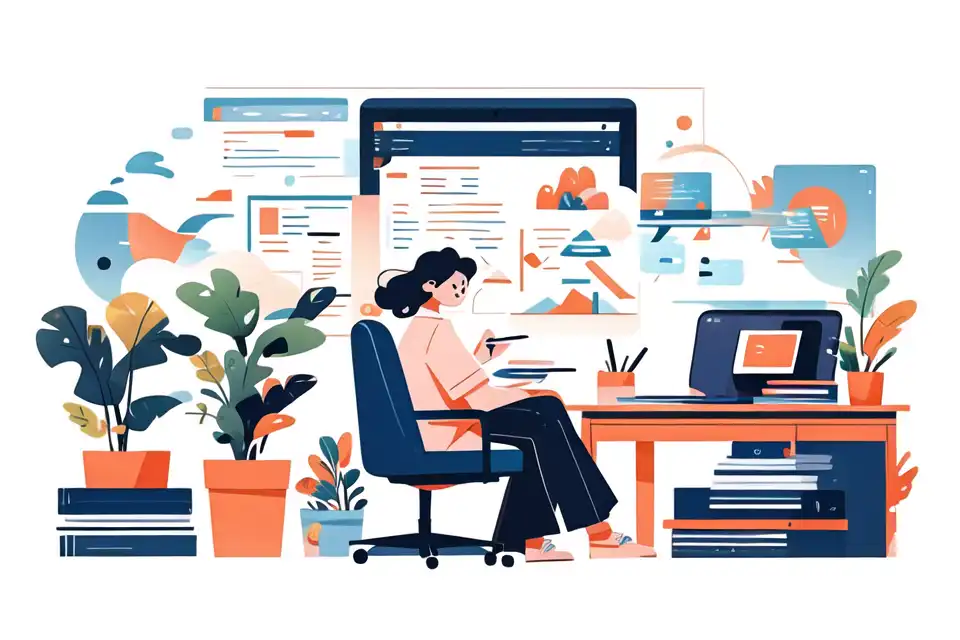How to Say Just a Heads Up Professionally
Master the art of professional communication in business settings with expert guidance. Learn how to say just a heads up professionally.
Try Lark for Free
Communication is the cornerstone of successful relationships, both in personal and professional spheres. A well-delivered heads-up can prevent misunderstandings, proactively address potential issues, and ensure that everyone is on the same page. This guide aims to equip individuals with the knowledge and skills to effectively deliver professional notifications, ultimately leading to improved communication and more efficient workflows.
Why is it important to understand how to say just a heads up professionally?
Effective professional communication hinges on the ability to convey information with clarity and tact. Understanding how to deliver a heads-up professionally is crucial for several reasons.
Clarity and Professionalism
Conveying information in a professional manner ensures that the message is perceived as valuable and credible. It reflects positively on the individual delivering the communication and fosters an environment of respect and trust.
Proactive Issue Management
A well-articulated heads-up allows individuals to address potential issues before they escalate, leading to smoother workflows and productive collaboration.
Building Professional Relationships
By mastering the art of delivering a heads-up professionally, individuals can cultivate strong professional relationships based on clear and respectful communication.
Use Lark Messenger to elevate your team communication.
Practical examples of dealing with how to say just a heads up professionally
Example 1:
Example 1:
A typical scenario when you don't know how to say just a heads up professionally
In the workplace, it's common to come across situations where providing a casual yet professional heads-up is necessary. Suppose you need to inform a colleague about a minor mistake in a report they submitted. Instead of using blunt language, you can employ tactful communication to soften the impact while conveying the necessary information. The phrase "Just wanted to bring to your attention…" can be an effective way to deliver the heads-up professionally.
Example 2:
Example 2:
A typical scenario when you don't know how to say just a heads up professionally
In a team meeting, you need to inform your teammates about a minor change in the project timeline. Without the right phrasing, this could be perceived as a sudden disruption. By prefacing the information with "I'd like to give everyone a heads-up about a slight adjustment in the timeline," you can ensure that the notification is received professionally.
Example 3:
Example 3:
A typical scenario when you don't know how to say just a heads up professionally
When addressing a potential delay in a deliverable, a professional heads-up can help manage expectations and demonstrate accountability. The phrase "I wanted to give you a heads-up that we may need a bit more time to ensure the quality of the deliverable," conveys the message in a professional and respectful manner.
Example 4:
Example 4:
A typical scenario when you don't know how to say just a heads up professionally
In a customer service setting, issues may arise where a heads-up needs to be delivered to a client. Instead of using abrupt language, phrases like "I thought I’d just let you know about a small issue that has arisen, which we are swiftly addressing," can maintain professionalism while addressing the concern.
What are the consequences of not knowing how to say just a heads up professionally?
Misinterpretation and Miscommunication
Failure to deliver a heads-up professionally can lead to misinterpretation and miscommunication, potentially causing unnecessary tension or confusion.
Damage to Professional Relationships
Inadequate communication of important information can strain professional relationships and lead to a lack of trust and credibility.
Operational Inefficiencies
The inability to deliver a heads-up professionally can result in operational inefficiencies, as issues may not be addressed in a timely and effective manner.
Learn more about Lark x Communication
Use Lark Messenger to elevate your team communication.
Methods of phrasing how to say just a heads up professionally
Method 1:
Prefacing the Information - Just a heads up, I wanted to let you know… - I thought I’d give you a heads-up about…
Method 2:
Tone and Delivery - Using a calm and composed tone can add professionalism to the message.
Method 3:
Acknowledging Relevance - Highlighting the relevance and importance of the information being conveyed can add weight to the heads-up.
Do's and dont's when you don't know how to say just a heads up professionally
| Do's | Dont's |
|---|---|
| Choose words carefully | Use abrupt language |
| Consider the recipient's perspective | Disregard the recipient's communication style |
| Follow up to ensure clarity | Assume the message was received and understood |
Conclusion
In conclusion, mastering the skill of delivering professional notifications is essential for effective communication in professional settings. The ability to say just a heads up professionally plays a significant role in fostering respectful and clear communication, which in turn contributes to collaborative and productive environments.








